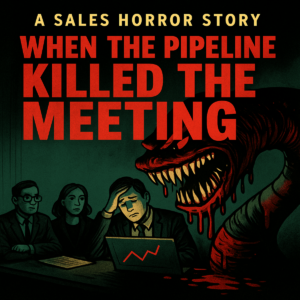Sales and marketing are historically misaligned, which is very curious given their goals are really the same, right? If sales and marketing both have the same goal of bringing more clients into the business, it doesn’t make sense that this misalignment still occurs. And technology and communication have evolved to the point that this misalignment should no longer be acceptable. So how can you bridge this misalignment? Here are four strategies for aligning sales and marketing:
- Track the right scorecard metrics
- Develop an aligned messaging plan
- Create cross-functional processes
- Align your tech and data
Let’s look at each one of the 4 strategies to align sales and marketing from a before and after perspective:
- Before: Sales and marketing exist as foes in silos
- After: Sales and marketing are aligned and working together to bring on more clients and sell more to their clients.
One point to reinforce, as we always do at Convergo, is that businesses should be focused on acquiring and retaining ideal clients, not just any client. Ideal Clients are the ones that can buy everything that you sell and that your business is optimized to serve. That concept is woven throughout this blog.
Track the Right Scorecard Metrics
Before: Sales and marketing have their own metrics that are completely unrelated. Marketing is pursuing scorecard metrics like website traffic or # of leads. In the meantime, sales managers hammer their sales teams to do more demos or deliver more proposals. What is missing from these metrics? Remember the Ideal Client concept?
After: Website traffic and number of leads are put by the wayside because they don’t consider the ideal client.
An Alternative metric is # of Ideal Prospect leads. This is the number of leads that come in that meet the Ideal Client Profile (ICP) criteria.
How does this promote alignment? First, marketing and sales agree on the ICP, and leads are filtered against this. Marketing then focuses its efforts on generating the right leads, and sales prioritizes closing them instead of chasing their tails with clients that are not necessarily good for the business. By the way, it is much easier for marketing to have a more narrow focus, and it takes fewer sales reps to close ideal clients and filter out suboptimal ones.
Develop An Aligned Messaging Plan
Before: Marketing is creating content and executing a plan that is based on their assumptions about a fictional persona that they assume is correct because they get no feedback from the sales team on what real people are saying.Meanwhile, the sales team complains that the marketing team is passing along leads that are not closable. They get frustrated, and the two sides maintain life in their silos.
After: The content plan is based on an Ideal Client Profile with personas created and agreed upon by both sales and marketing. Sales and Marketing have regular meetings where the sales team shares common questions, concerns, and outcomes that their clients and prospects are asking about and sharing.
Then, the content hits the mark, and sales reps have begun actively sharing content to support their efforts to serve their prospects and clients.
Create Cross-Functional Processes
Before: Marketing has their processes to create content and tactics to increase website traffic and generate “leads, ” which have a very low close rate. In their mind, they are succeeding because all that they are being asked to do is to generate leads.
Sales teams are managing their sales process. A low percentage of leads are actually sales qualified, and even fewer advance to later stages in the sales cycle.
After: The “Sales Cycle” has been replaced by a “Net-New Experience” where sales and marketing work together to bring the Ideal Clients into their business and usher out the ones that are not good fits.
Only Ideal Prospects are in the pipeline, and sales reps help them through the Net-New Experience using documented processes supported by marketing content that answers their questions, generates trust, and helps them seamlessly navigate the experience with your business.
Align Your Tech and Data
Before: Marketing uses platforms to execute tactics like email marketing and may have access to databases of companies in their market that might fit their profile. A lead is created and passed off to sales, often with limited information.
Sales uses their “CRM” for their sales process to close business. They don’t have visibility to what content the prospect might engage with and therefore are serving the prospect only knowing part of the picture.
In the meantime, client data is trapped inside a proprietary ERP that sales has no visibility to, limiting potential cross-selling possibilities.
After: The CRM is a single source of the truth, with Marketing, Sales, and Operations enjoying a 360-degree view of the Ideal Prospect/Client from when the prospect is totally unaware of your business to where they are buying everything they can from you.
Conclusion
Given advancements in CRM and Marketing Automation from companies like Hubspot, the excuses for Sales and marketing working in silos are disappearing. Stay tuned for more detail on each of these 4 strategies in separate blogs.





